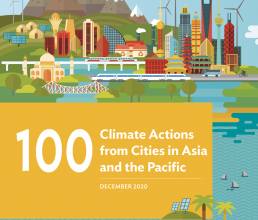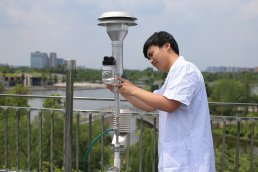First appeared in

Asian Development Bank
100 Climate Actions from Cities in Asia and the Pacific
Five years of air pollution action in Chinese megacity Chengdu has improved the local air quality substantially, increasing the number of ‘good air quality’ days by 100, and life expectancy by an estimated 3.9 years.
Five years of air pollution action in Chinese megacity Chengdu has improved the local air quality substantially, increasing the number of ‘good air quality’ days by 100, and life expectancy by an estimated 3.9 years.
To address emissions and poor air quality in Chengdu, the city spent over CNY1.5 billion over five years on a range of actions targeting high-polluting sectors.
11.4M
TONS OF CO₂ EQUIVALENT REDUCED BETWEEN 2013-17
Starting in 2013, the five-year plan took a five-step approach: problem identification; solution research; design; implementation; and monitoring. Although the city’s population grew by 12% over the 2013-17 period, the policies implemented led to significant reductions in air pollution and greenhouse gas emissions, including reduction in sulfur dioxide (SO2)and particulate matter (PM2.5) pollution, which fell by 54% and 35% respectively.
Much of the improvement in Chengdu’s air quality is due to a sharp drop in the city’s reliance on coal, with a combination of hydropower, solar, wind, and natural gas being used instead. A number of policies have also been introduced to help shift towards cleaner forms of mobility, as well as control dust emissions from the expanding urban construction sector. There is also ongoing research into nature-based solutions along highways to reduce pollutants from vehicles.

Knowledge sharing was a crucial element in this project, and this plan to improve air quality has since been reproduced in other cities in the region (photo by Liu Wei).
The Challenge
Chengdu’s rapid industrialization and urbanization has accompanied decades of rising greenhouse gas emissions and deteriorating air quality.
Co-Benefits
Economic Reductions in air pollution and greenhouse gas emissions were not matched by economic stagnation, and the city’s GDP grew by 8% each year.
Health The policies enacted under this action plan have significantly improved air quality in Chengdu, increasing the life expectancy of residents by 3.9 years.

